A major solar flare measuring X2.8 erupted from the Sun’s southeast limb at 07:08 UTC on May 27, 2024, producing a strong coronal mass ejection (CME). The event started at 06:49 and ended at 07:25 UTC.
- The flare was produced by old Active Region 3664.
- The region produced an X8.7 solar flare on May 14, the strongest in Solar Cycle 25, and multiple Earth-directed CMEs which resulted in G5 – Extreme geomagnetic storming — the strongest since 2003.
A Type II Radio Emission, with an estimated velocity of 1 135 km/s, was detected starting at 06:59 UTC — suggesting a CME was produced.
A Type IV Radio Emission was detected at 07:05 UTC. Type IV emissions occur in association with major eruptions on the Sun and are typically associated with strong CMEs and solar radiation storms.
Additionally, a 10 cm Radio Burst (tenflare), lasting 9 minutes and with a peak flux of 300 sfu, was registered from 06:56 to 07:05 UTC. A 10cm radio burst indicates that the electromagnetic burst associated with a solar flare at the 10cm wavelength was double or greater than the initial 10cm radio background. This can be indicative of significant radio noise in association with a solar flare. This noise is generally short-lived but can cause interference for sensitive receivers including radar, GPS, and satellite communications.
Radio frequencies were forecast to be most degraded over eastern Africa, parts of eastern Europe, Asia and the Indian Ocean at the time of the flare.
This region — previously numbered 3664 — produced around 100 M-class and over 10 X-class solar flares during its last rotation through the Earth side of the Sun. The flares resulted in a G5 – Extreme geomagnetic storm — the strongest since 2003 — on May 10 and 11. On May 14, this region produced X8.7 solar flare — currently the strongest solar flare of Solar Cycle 25.
The location of this region currently does not favor Earth-directed CMEs but this will change in the days ahead as it rotates toward the center of the disk.
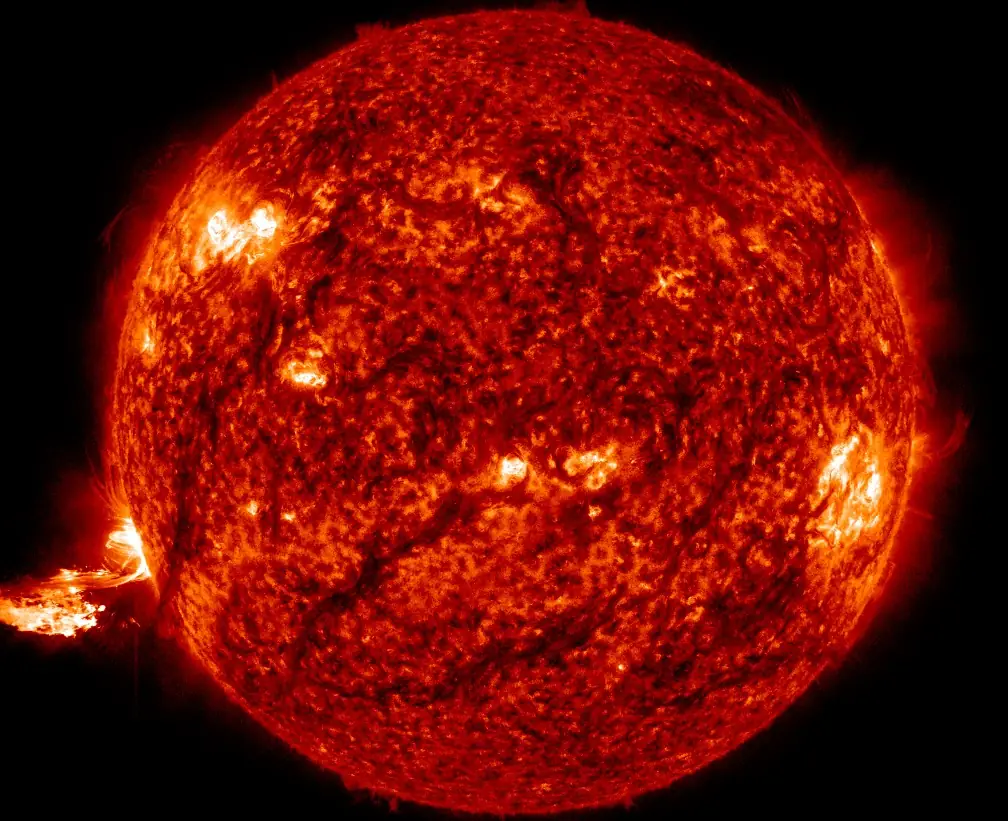
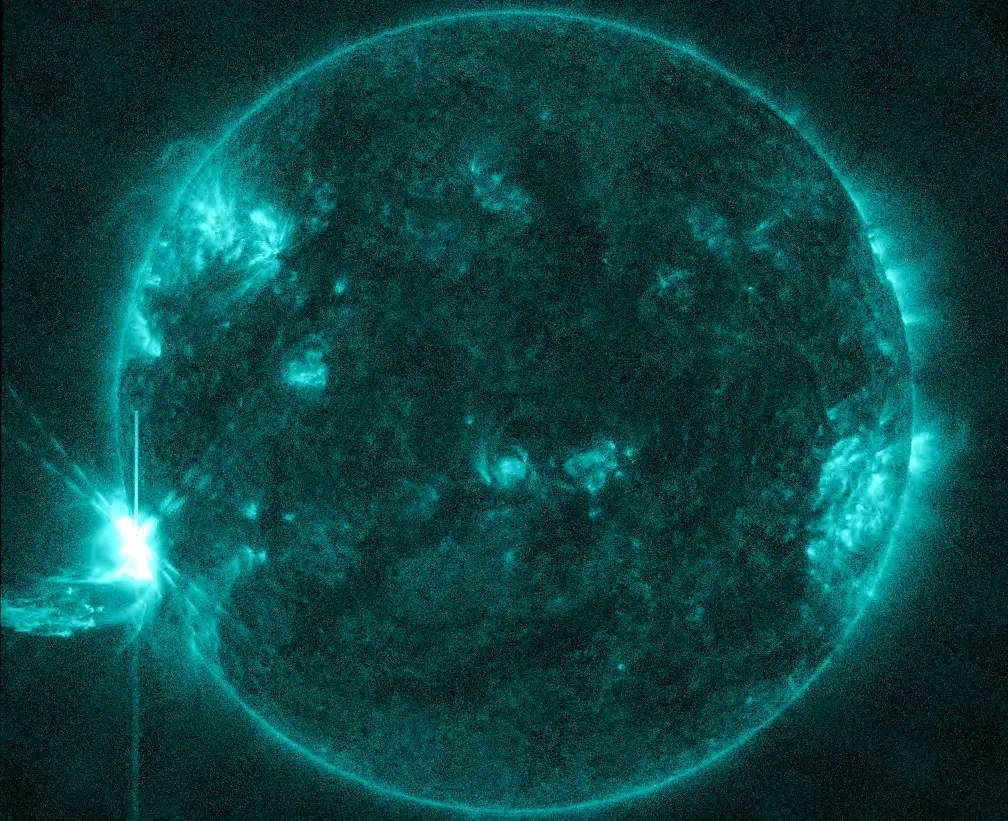

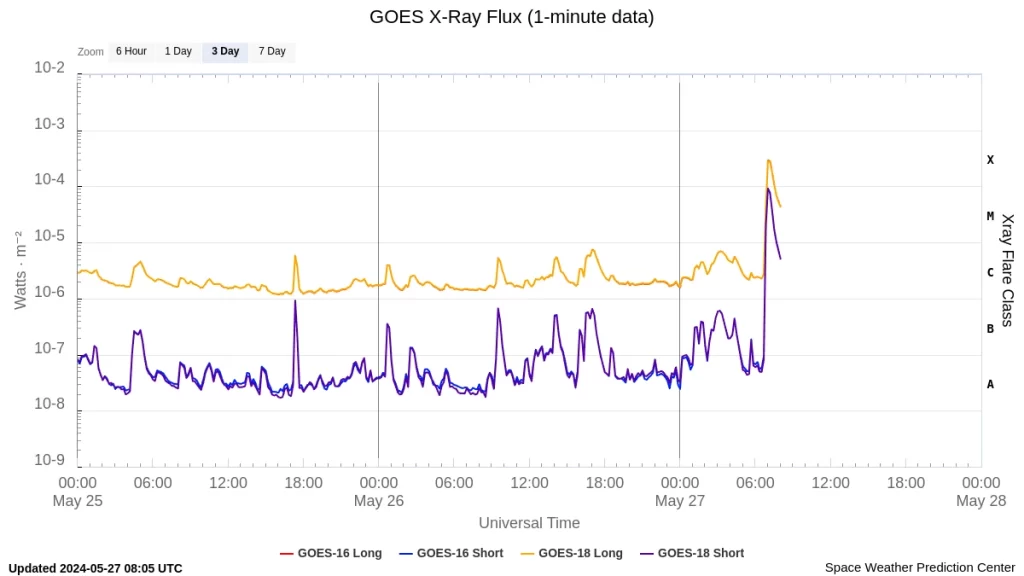

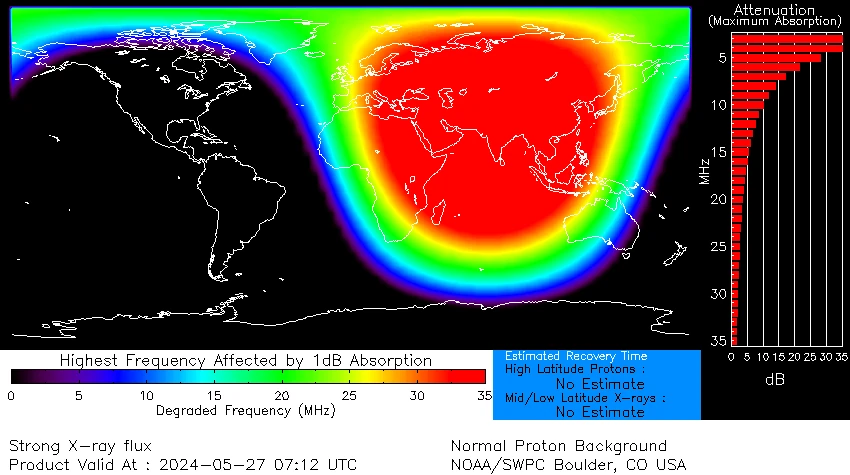

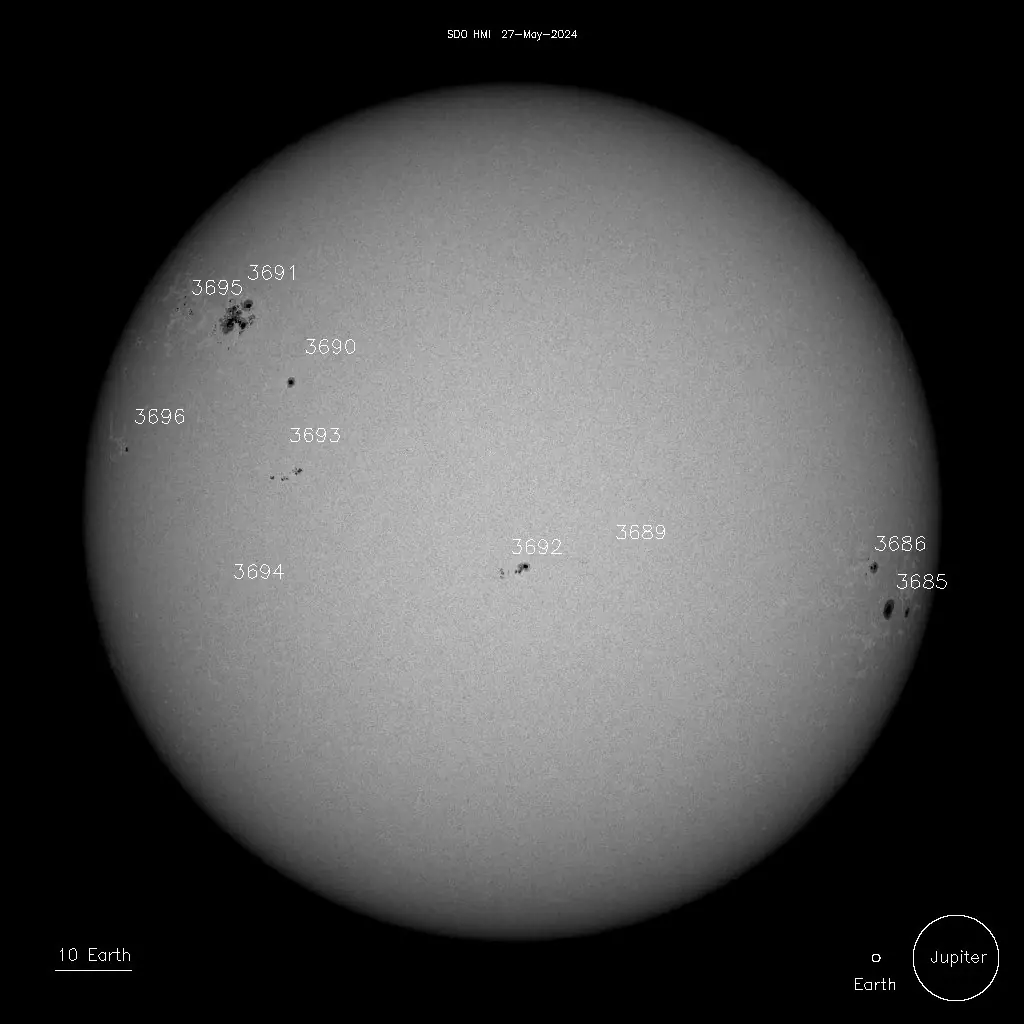

3685 – Beta
3686 – Beta
3689 – Alpha
3690 – Beta
3691 – Beta-Gamma-Delta (previously numbered 3663)
3692 – Beta
3693 – Beta
3694 – Alpha
3695 – Beta
3696 – Alpha
Featured image credit: X2.8 solar flare on May 27, 2024. Credit: NASA SDO/AIA 304, Helioviewer, The Watchers
Major X2.9 flare erupts on SE limb of the Sun, signals new wave of heightened solar activity
Wednesday, May 15, 2024
X3.4+ solar flare erupts from Region 3664, solar radiation storm continues
Wednesday, May 15, 2024
Major X8.7 flare erupts from Region 3664 — the strongest solar flare of Solar Cycle 25
Tuesday, May 14, 2024
X1.7 and long duration M6.6 solar flares erupt from Region 3664, solar radiation storm in progress
Tuesday, May 14, 2024
G5 – Extreme geomagnetic storm likely as another set of CMEs merges and impacts Earth on May 12
Sunday, May 12, 2024
Powerful X5.8 solar flare erupts from Region 3664 during G5 – Extreme geomagnetic storm
Saturday, May 11, 2024
Major X3.9 solar flare erupts from AR 3664 — the 10th X-class flare in just 7 days
Friday, May 10, 2024